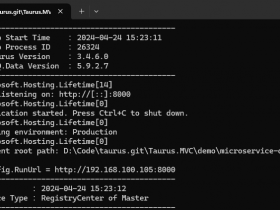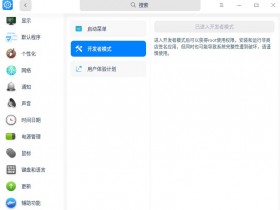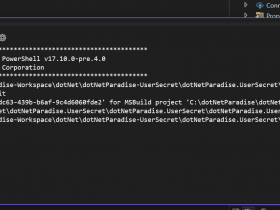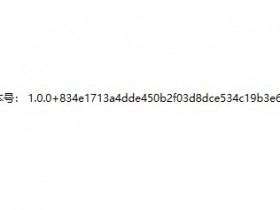- A+
所属分类:.NET技术
C#中有很多集合类型,比如List<T>,Dictionary<TKey,TValue>,这些是我们常用的,但也有一些少众的场合使用的集合:特征类型的ReadOnly集合,Sort集合;封装特定算法类型的集合:Queue<T>(先进先出),Stack<T>(后进先出),LinkedList<T>(链表,每个元素承上启下);这些集合都是在特定的场合下使用,因为他们的特性限制了他的使用场景。
- 只读集合:

1 /// <summary> 2 /// 只读List 3 /// </summary> 4 static void ReadOnlyListTest() 5 { 6 IReadOnlyList<string> readOnlyList = new List<string>() { "a", "b", "c" }; 7 foreach (var item in readOnlyList) 8 { 9 Console.WriteLine(item); 10 } 11 /*输出结果 12 a 13 b 14 c 15 */ 16 } 17 /// <summary> 18 /// 只读字典 19 /// </summary> 20 static void ReadOnlyDictionaryTest() 21 { 22 var readOnlyDictionary = new ReadOnlyDictionary<int, string>( 23 new Dictionary<int, string> 24 { 25 {5,"五"}, 26 {1,"一"}, 27 {10, "十"} 28 }); 29 30 foreach (var item in readOnlyDictionary) 31 { 32 Console.WriteLine($"{item.Key}~{item.Value}"); 33 } 34 /*输出结果 35 5~五 36 1~一 37 10~十 38 */ 39 }
- 排序集合:

1 /// <summary> 2 /// 排序列表 3 /// </summary> 4 static void SortListTest() 5 { 6 var sortList = new SortedList<int, string>(); 7 sortList.Add(10, "十"); 8 sortList.Add(5, "五"); 9 sortList.Add(1, "一"); 10 Console.WriteLine(sortList.Keys); 11 foreach (var item in sortList) 12 { 13 Console.WriteLine($"{item.Key}~{item.Value}"); 14 } 15 /*输出结果 16 1~一 17 5~五 18 10~十 19 */ 20 } 21 /// <summary> 22 /// 排序字典 23 /// </summary> 24 static void SortDictionaryTest() 25 { 26 var sortDic = new SortedDictionary<int, string>(); 27 sortDic.Add(10, "十"); 28 sortDic.Add(5, "五"); 29 sortDic.Add(1, "一"); 30 Console.WriteLine(sortDic.Keys); 31 foreach (var item in sortDic) 32 { 33 Console.WriteLine($"{item.Key}~{item.Value}"); 34 } 35 /*输出结果 36 1~一 37 5~五 38 10~十 39 */ 40 } 41 /// <summary> 42 /// 排序set,不含重复值 43 /// </summary> 44 static void SortSetTest() 45 { 46 var sortSet = new SortedSet<int>(); 47 sortSet.Add(10); 48 sortSet.Add(5); 49 sortSet.Add(1); 50 sortSet.Add(1); 51 foreach (var item in sortSet) 52 { 53 Console.WriteLine(item); 54 } 55 /*输出结果 56 1 57 5 58 10 59 */ 60 }
- 元素访问特性集合



1 /// <summary> 2 /// 链表:每个元素承上启下 3 /// </summary> 4 static void LinkedListTest() 5 { 6 var linkedList = new LinkedList<string>(); 7 linkedList.AddLast("2"); 8 linkedList.AddLast("3"); 9 linkedList.AddLast("5"); 10 11 linkedList.AddFirst("1"); 12 13 linkedList.AddBefore(linkedList.Find("5"), "4"); 14 foreach (var item in linkedList) 15 { 16 Console.WriteLine(item); 17 } 18 19 Console.WriteLine($"2前面的值:{linkedList.Find("2").Previous.Value}"); 20 Console.WriteLine($"2后面的值:{linkedList.Find("2").Next.Value}"); 21 22 /*输出结果 23 1 24 2 25 3 26 4 27 5 28 2前面的值:1 29 2后面的值:3 30 */ 31 } 32 /// <summary> 33 /// 哈希集合 34 /// </summary> 35 static void HashSetTest() 36 { 37 var hashSet = new HashSet<string>(); 38 hashSet.Add("a"); 39 hashSet.Add("c"); 40 hashSet.Add("b"); 41 hashSet.Add("a"); 42 hashSet.Add("c"); 43 hashSet.Add("b"); 44 foreach (var item in hashSet) 45 { 46 Console.WriteLine(item); 47 } 48 /*输出结果 49 a 50 b 51 c 52 */ 53 } 54 /// <summary> 55 /// 队列:先进先出 56 /// </summary> 57 static void QueueTest() 58 { 59 var queue = new Queue<int>(); 60 queue.Enqueue(1); 61 queue.Enqueue(2); 62 queue.Enqueue(3); 63 foreach (var item in queue) 64 { 65 Console.WriteLine(item); 66 } 67 Console.WriteLine($"dequeue元素:{queue.Dequeue()}"); 68 /*输出结果 69 1 70 2 71 3 72 dequeue元素:1 73 */ 74 } 75 /// <summary> 76 /// 堆栈:后进先出 77 /// </summary> 78 static void StackTest() 79 { 80 var stack = new Stack<int>(); 81 stack.Push(1); 82 stack.Push(2); 83 stack.Push(3); 84 foreach (var item in stack) 85 { 86 Console.WriteLine(item); 87 } 88 //pop元素 89 Console.WriteLine($"pop元素:{stack.Pop()}"); 90 /*输出结果 91 3 92 2 93 1 94 pop元素:3 95 */ 96 }




